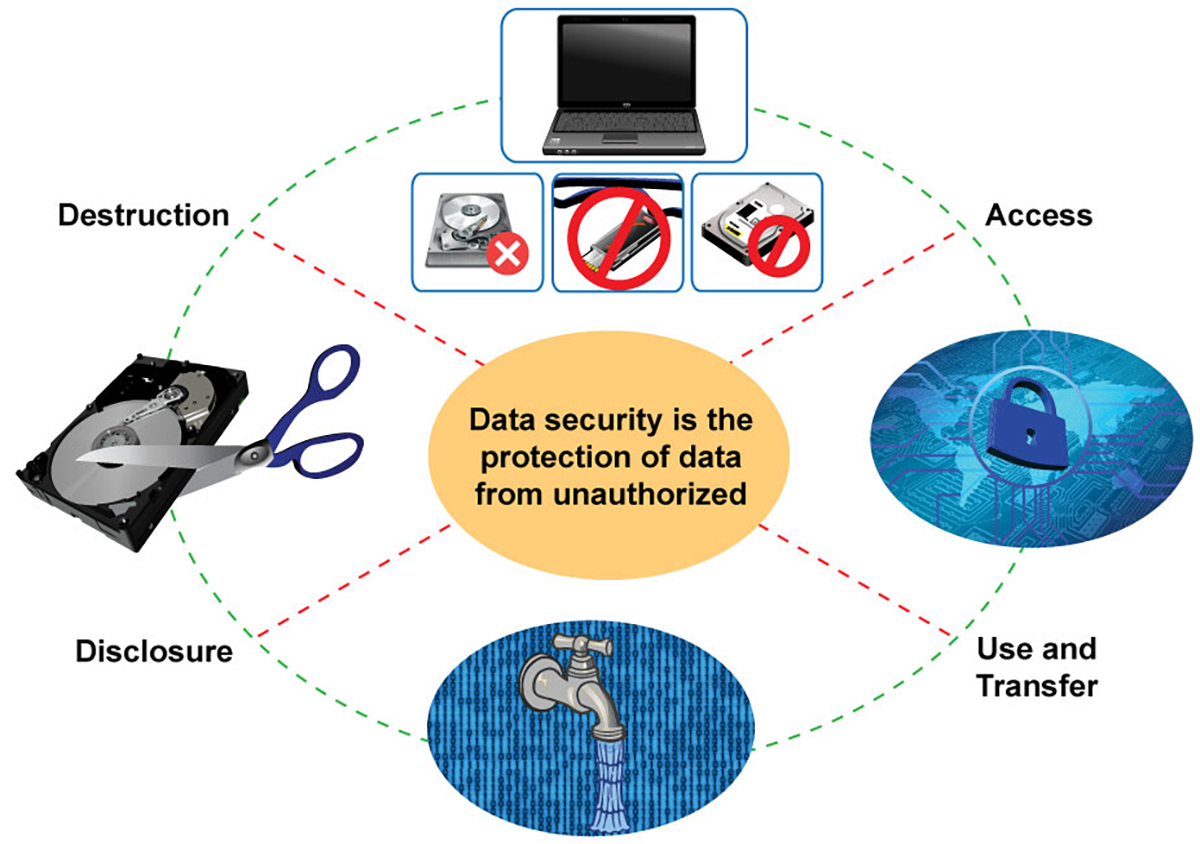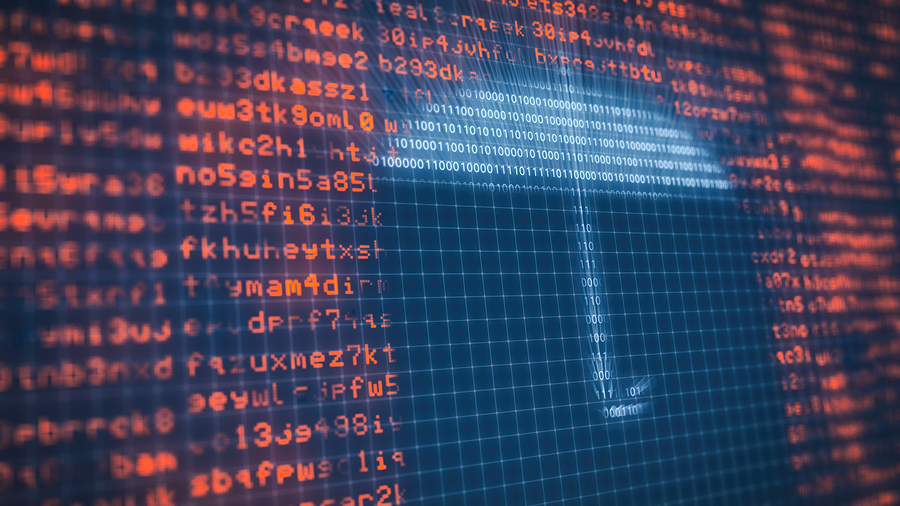How Robust Data Destruction Improves Your Overall Cyber Security Steps
Wiki Article
Checking Out the Value of Data Devastation in the Context of Computer Safety Services and Protecting Confidential Data
In a period where data violations are significantly common, the importance of efficient data damage can not be overstated. What approaches can organizations implement to enhance their data destruction procedures?Comprehending Data Destruction
Information devastation is a vital element of computer safety that includes the long-term elimination of information from storage tools to stop unauthorized accessibility and potential information violations. In an increasingly electronic landscape, companies deal with increased threats related to sensitive info being incorrectly accessed or manipulated. Reliable data destruction safeguards versus these dangers, guaranteeing that confidential dataâEUR" such as consumer details, copyright, and monetary recordsâEUR" can not be recovered after disposal.Comprehending the relevance of information devastation extends past plain conformity with governing and lawful structures; it is essential for maintaining business stability and trust fund. When information is incorrectly handled or improperly destroyed, the repercussions can be severe, including economic loss, reputational damage, and lawful obligations.

Approaches of Information Obliteration

One widespread approach is information wiping, which entails overwriting existing data with random patterns multiple times. This method provides the original information irretrievable, making it a preferred choice for organizations seeking to shield secret information.
Another method is degaussing, which utilizes a powerful electromagnetic field to interrupt the magnetic domains on storage space devices, efficiently removing the information. This approach is particularly effective for magnetic media yet is not appropriate to solid-state drives.
Physical destruction is an additional robust technique, involving the shredding or squashing of storage space gadgets. This method assurances that data recovery is basically impossible, making it perfect for highly delicate info.
Finally, encryption can function as a corresponding method to information eradication. By encrypting data before deletion, companies can add an extra layer of safety and security, ensuring that even if remnants are recuperated, they stay inaccessible without the decryption secret. Each method should be selected based upon the degree of data level of sensitivity and the specific safety and security needs of the company.
Legal Conformity and Information Safety
Organizations should navigate a complicated landscape of legal needs related to information protection, specifically after implementing techniques of data removal. Numerous laws, such as the General Data Defense Policy (GDPR) and the Medical Insurance Transportability and Responsibility Act (HIPAA), impose rigid standards on how organizations need to dispose and deal with of sensitive information. Failing to adhere to these policies can cause significant lawful effects, including significant fines and reputational damage.Information devastation processes should be meticulously recorded to show conformity with relevant laws and requirements. This paperwork not only serves as proof of adherence to legal commitments yet likewise shows a commitment to safeguarding delicate info. Organizations needs to also develop clear plans pertaining to information retention and devastation timelines, guaranteeing that information is not held longer than required.

Additionally, normal audits next page and evaluations of information destruction methods are necessary to keep conformity and adjust to advancing lawful structures (data destruction). By proactively attending to legal needs, companies can alleviate threats related to information breaches and demonstrate their commitment to information protection. Ultimately, prioritizing lawful conformity in information destruction processes is not simply a governing responsibility, but a basic element of a durable data security method
Effect On Company Online Reputation
The credibility of a service can be dramatically affected by its approach to information destruction and management. In today's digital landscape, where data violations can take place anytime, the failing to correctly take care of sensitive details can result in severe repercussions. Organizations that improperly manage data destruction danger revealing private customer info, which not only breaches privacy legislations however also deteriorates count on amongst customers and stakeholders.A ruined credibility can result in decreased customer loyalty, as customers become hesitant to engage with a business that has actually demonstrated oversight in protecting their information. Adverse publicity bordering an information breach can have a lasting result, as prospective consumers could be deterred by the viewed absence of safety and security. This can lead to a direct decrease in revenue and market share.
Additionally, businesses that prioritize data destruction as part of their protection method can enhance their track record by showcasing their dedication to securing sensitive information. By adopting rigorous information administration techniques, companies can not only reduce risks yet also place themselves as trustworthy entities in their particular sectors, consequently reinforcing their total brand name photo.

Finest Practices for Secure Disposal
Applying finest practices for safe and secure disposal of data is necessary for minimizing threats associated with data violations and making sure conformity with privacy policies. Organizations must embrace an extensive data disposal plan that outlines treatments for both electronic and physical information devastation.For physical information storage space tools, such as difficult drives, shredding or degaussing is suggested to avoid information recovery. In addition, organizations need to maintain a chain of safekeeping documentation throughout the disposal process, guaranteeing responsibility and traceability of disposed products.
For electronic data, making use of software application that sticks to market requirements for information wiping is crucial. This software program should overwrite existing information multiple times, making recovery virtually impossible. It is additionally essential to validate the performance of the information destruction process with audits or third-party assessments.
Training staff members on protected disposal practices includes an additional layer of protection, as human mistake can typically lead to data direct exposure. Frequently evaluating and upgrading disposal plans guarantees positioning with developing guidelines and technological advancements. By implementing these best techniques, companies can substantially lower the threat of unauthorized data accessibility and enhance their general information defense technique.
Verdict
Finally, information damage is a basic aspect of computer system protection solutions that ensures the security of secret information from unauthorized access. Carrying out useful link reliable techniques of information obliteration, adhering to lawful conformity, and recognizing the impact on organization track record are vital components of a comprehensive data security method. other By embracing finest practices for protected disposal, companies can cultivate trust fund with customers and safeguard sensitive information, inevitably contributing to an extra safe electronic landscape.In an age where data violations are significantly usual, the value of effective data devastation can not be overemphasized.Data damage is an important component of computer system safety and security that involves the irreversible elimination of information from storage tools to avoid unapproved gain access to and possible data violations. Organizations ought to additionally develop clear policies pertaining to data retention and destruction timelines, ensuring that information is not held longer than essential.
By proactively addressing legal demands, companies can reduce threats associated with information violations and demonstrate their dedication to information safety and security (data destruction). Inevitably, prioritizing legal conformity in information destruction processes is not simply a regulatory responsibility, however a fundamental facet of a robust data protection strategy
Report this wiki page